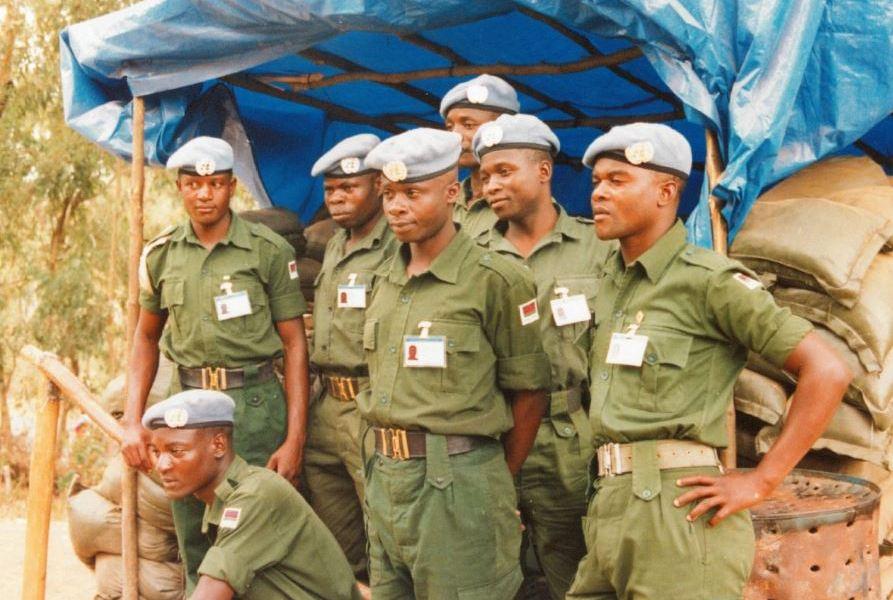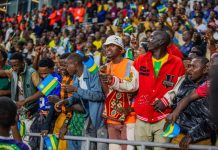Africa-Press – Rwanda. Three years into the protracted war to liberate Rwanda from the tyrannical rule of Maj. Gen. Juvenal Habyarimana, it was clear that the Rwanda Patriotic Front (RPF/A) rebels were already in control of vast parts of the country.
The rebels had exerted lethal pressure on the government which agreed to negotiated terms of power sharing. On 4th, August 1993 the two sides had signed a peace agreement in Arusha, Tanzania.
Arusha negotiations between the Government of the Republic of Rwanda and the Rwandan Patriotic Front envisioned the establishment of a Broad-Based Transitional Government (BBTG), which would include the insurgent RPF and the five political parties that had composed a temporary government since April 1992 in anticipation of general elections.
These Accords included other points considered necessary for lasting peace: the rule of law, repatriation of refugees both from fighting and from power sharing agreements, and the merging of government and rebel armies.
Meanwhile, Rwanda continued to accuse Uganda of supporting RPF; Uganda denied the allegations. On 22 February 1993, both countries asked the United Nations to help establish the facts.
In separate letters to the President of the United Nations Security Council, the two countries called for the deployment of United Nations military observers along their 150-kilometre common border in order to prevent the military use of the area, especially the transportation of military supplies.
Secretary-General Boutros Boutros-Ghali decided to send a goodwill mission to Rwanda and Uganda from 4 to 18 March 1993. A technical mission dispatched by the Secretary-General to the border area visited Uganda from 2 to 5 April and Rwanda on 6 April.
The mission reported that it would be possible to deploy United Nations military observers to monitor the border between Uganda and Rwanda and verify that no military assistance was being provided across it. Because RPF control of the border area was extensive, the military observers had to be deployed on the Ugandan side of the border.
On 22 June 1993, the Security Council, by its resolution 846 (1993), authorized the establishment of the United Nations Observer Mission Uganda-Rwanda (UNOMUR) on the Uganda side of the common border, for an initial period of six months, subject to review every six months.
A United Nations reconnaissance mission visited Rwanda from 19 to 31 August 1993. Its senior officials also consulted with the Government of Tanzania and the Secretary-General of OAU.
On the basis of the mission’s findings, the Secretary-General recommended to the Security Council the establishment of a United Nations Assistance Mission for Rwanda (UNAMIR), with the mandate of “contributing to the establishment and maintenance of a climate conducive to the secure installation and subsequent operation of the transitional Government”.
UNAMIR was established on 5 October by Security Council resolution 872 (1993). On 18 October 1993, the Secretary-General informed the Council that he would appoint Brigadier-General Dallaire, then CMO of UNOMUR, as UNAMIR Force Commander. General Dallaire arrived in Kigali on 22 October 1993, followed by an advance party of 21 military personnel on 27 October.
A status of forces agreement was signed by the Government on 5 November 1993, and a copy was forwarded to RPF, which confirmed its readiness to cooperate in its implementation.
On 12 November, the Secretary-General informed the Council that he had decided to appoint as his Special Representative for Rwanda Mr. Jacques-Roger Booh-Booh, former Minister for External Relations of Cameroon. Mr. Booh-Booh arrived in Kigali on 23 November 1993.
The principal functions of UNAMIR would be to assist in ensuring the security of the capital city of Kigali; monitor the ceasefire agreement, including establishment of an expanded demilitarized zone (DMZ) and demobilization procedures; monitor the security situation during the final period of the transitional Government’s mandate leading up to elections; and assist with mine-clearance.
The Mission would also investigate alleged non-compliance with any provisions of the peace agreement and provide security for the repatriation of Rwandan refugees and displaced persons. In addition, it would assist in the coordination of humanitarian assistance activities in conjunction with relief operations.
The Secretary-General proposed that the military observers of UNOMUR come under the command of the new Mission, while maintaining their separate monitoring tasks on the Uganda-Rwanda border. UNAMIR would also incorporate elements of NMOG II which was mandated by OAU to supervise the ceasefire until 31 October 1993.
The operation would be conducted in four phases. The first phase would begin on the day the Security Council established UNAMIR and would end on the day the transitional Government was installed, estimated in late 1993.
UNAMIR’s objective would be to establish conditions for the secure installation of such a Government, and its strength, by the end of phase one, would total 1,428 military personnel.
During phase two, expected to last 90 days or until the process of disengagement, demobilization and integration of the Armed Forces and Gendarmerie began, the build-up of the Mission would continue to a total of 2,548 military personnel.
UNAMIR would continue to monitor the DMZ, to assist in providing security in Kigali and in the demarcation of the assembly zones, and to ensure that all preparations for disengagement, demobilization and integration were in place.
During phase three, which would last about 9 months, the Mission would establish, supervise and monitor a new DMZ and continue to provide security in Kigali.
The disengagement, demobilization and integration of the Forces and the Gendarmerie would be completed in this stage, and the Mission would reduce its staff to approximately 1,240 personnel.
Phase four, which would last about four months, would see a further reduction of the Mission’s strength to the minimum level of approximately 930 military personnel. UNAMIR would assist in ensuring the secure atmosphere required in the final stages of the transitional period leading up to the elections.
In order to verify that law and order were maintained effectively and impartially, the Secretary-General proposed to deploy a small United Nations civilian police unit in Kigali and the nine prefecture capitals of Rwanda and in specific police installations.
For More News And Analysis About Rwanda Follow Africa-Press






